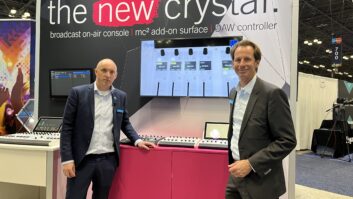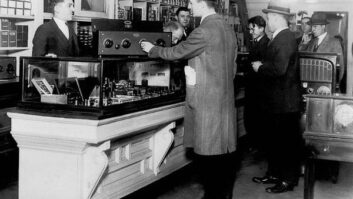
We’ve heard plenty of talk about the impact of 5G. On Saturday of opening weekend at the NAB Show, Athul Prasad, senior specialist, Radio Research Company at Nokia Bell Labs, will give a talk describing 5G as a “key enabler for new verticals and markets.”
A company overview notes that over 90 years, “Bell Labs has invented many of the foundational technologies that underpin information and communications networks and all digital devices and systems.” Nokia Bell Labs outlined its current vision in the 2015 book “The Future X Network: A Bell Labs Perspective.”
Radio World: Why should radio and TV engineers pay attention to the 5G rollout?
Athul Prasad: With the extreme mobile broadband data rates and support for multiple verticals, 5G would be of key interest to radio and TV engineers with the ability to support the delivery of new media content. There has already been significant interest from broadcasters — European Broadcasters’ Union has been actively contributing to the 5G standards requirement definition and is a partner in 5G-Xcast project — and could be the generation of wireless network where the terrestrial broadcast, cellular and fixed network worlds converge. Thus, 5G provides a unique opportunity for radio and TV engineers to maximize the technology adoption.
RW: You refer to 5G as a key enabler for new verticals and markets. Give us some examples.
Prasad: 5G is the next-generation of cellular networks (after 3G and 4G), which expected to be trialed and deployed by communication service providers in key global markets. A key differentiator for 5G as compared to previous generations is that it will not only provide a significantly higher order of magnitude increase in peak data rates, but it is also designed to meet very challenging technical requirements (in terms of high reliability and low latency) to support new use cases that are derived from several vertical industries, not just for mobile broadband. These vertical industries include public safety, factory automation, smart cities, vehicular communications and autonomous driving, media and entertainment, etc.
The adoption of verticals would also enable the entry of wireless networks based on 5G into new markets for providing connectivity solutions.
RW: What is Nokia Bell Labs’ role in 5G?
Prasad: Nokia Bell Labs, the world-renowned industrial research arm of Nokia, has been a major force in innovating, driving and participating in 5G research, standardization and industry collaboration. In the context of Xcasting in 5G, Nokia Bell Labs has been engaged in pioneering research for enabling the mass delivery of inter-connected social experiences — such as AR/VR, use of unlicensed frequency bands for Xcasting, and the development of a simplified and modular framework for Xcasting using 5G networks.

RW: What is the 5G-Xcast project?
Prasad: 5G-Xcast is a 5G Infrastructure Public Private Partnership (5G PPP) Phase-II project focused on Broadcast and Multicast Communication Enablers For the Fifth Generation of Wireless Systems.
The project will first analyze the requirements for future media, including 4k/8k Ultra-High-Definition Television (UHDTV), HDR (High-Dynamic Range), HFR (High Frame Rates) and wide color space, object-based content, Virtual/Augmented/Mixed Reality (VR/AR/MR), 360¡ visual media and Next Generation Audio, covering both commercial and technical aspects.
Then, the project will define the top-level specifications for the transport and application layers needed to address them, along with the system architectures. Common Application Programming Interfaces will be developed to enable a seamless access to content and services at any time, any place and from any device.
5G-Xcast will take a resolutely practical approach with comprehensive specifications, proofs of concept prototypes and demonstrations. It will closely work with relevant 5G-PPP Phase II projects and contribute to 3GPP and other standards developing bodies. The 5G-Xcast system shall exploit delivery modes for unicast, multicast, broadcast as well as local caching. It will also devise strategies to facilitate the migration of media content and services from legacy systems. In developing media delivery solutions, the project will take account of the wider use ranges of 5G including services to vehicles, public safety and health, and Internet of Things to ensure they dovetail together.
The project is a collaboration between industry and academia, an overview of which is shown in the accompanying image. Dr. David Gómez-Barquero from Universitat Politecnica de Valencia, Spain is the project manager, I am the technical manager and Dr. Dr. Belkacem Mouhouche from Samsung is the innovation manager of the project.
More information available at http://5g-xcast.eu/about/.
RW: What is the key takeaway from your presentation?
Prasad: The lecture will give an overview and current status of 5G in terms of key features, standards evolution and potential deployments. The presentation will also provide a detailed overview of the various technology components current being studied to enable multicast/broadcast using 5G networks, and how it enables a common framework for various use cases and verticals to enable the mass delivery of common content to the users.












